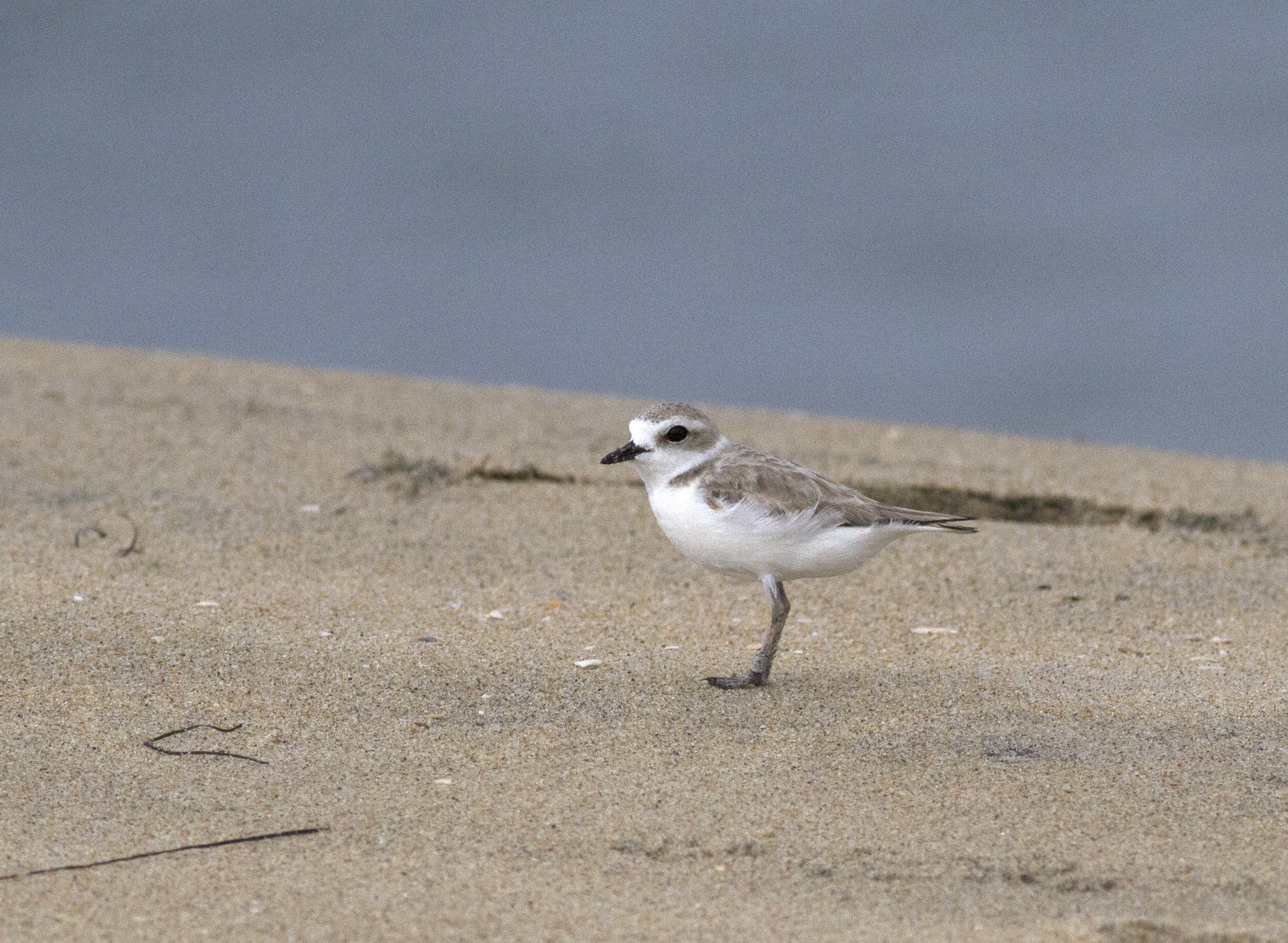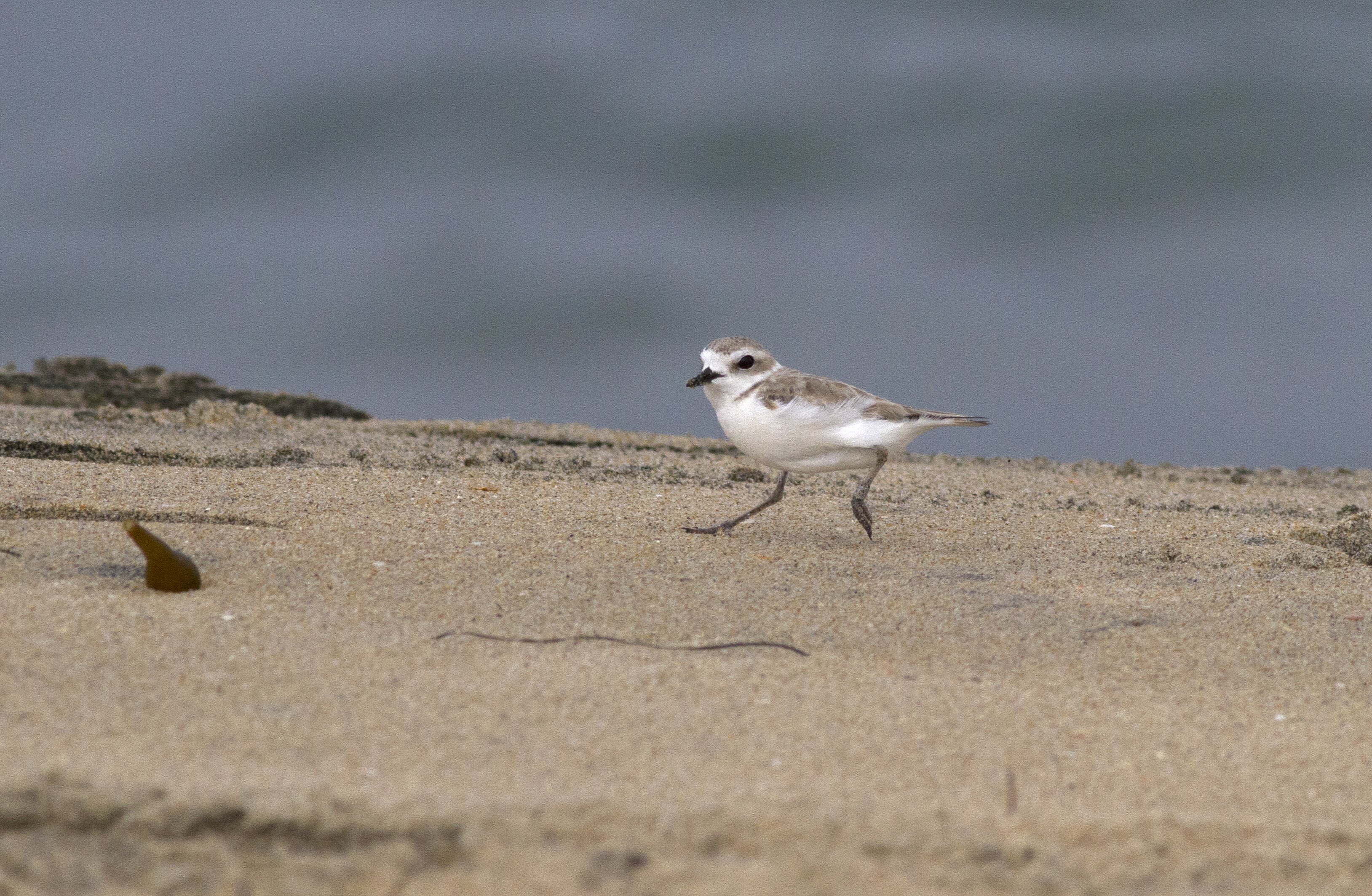Current Distribution Rangewide
Range is along the Pacific Coast from the state of Washington to Baja California, Mexico. The majority of breeding birds are found in California [1].
Known Populations in San Diego County
Occurrences found in Tijuana Slough National Wildlife Refuge, Batiquitos Lagoon Ecological Reserve, South Carlsbad State Beach, Torrey Pines State Natural Reserve, Fiesta Island, San Diego Bay National Wildlife Refuge, Leucadia State Beach, Borderfield State Park, Cardiff State Beach, Torrey Pines State Beach, Agua HEdionda Lagoon Ecological Reserve, Buena Vista Lagoon Ecological Reserve, Kendall Frost Marsh, Wilmont and Morro Hills, Augua Hedionda-SDGE, Silver Strand State Beach, San Elijo Lagoon Ecological Reserve, and Aviara Master HOA.
List Status
FT, SSC
Habitat Affinities
Pacific coast population nests and roosts primarily above the high tide line on coastal beaches [1;2] and may also use sand-spits, dunebacked beaches, sparsely vegetated dunes, unvegetated beach strands, salt pans lagoons and estuaries, and beaches at river mouths [3;4]. Bluff-backed beaches, dredged material disposal sites, salt pond levees, dry salt ponds, and river bars are less common nesting habitats [2]. Winters primarily in coastal California and Mexico [1] on beaches, in man-made salt ponds, and on estuarine sand and mud flats [2].
Taxonomy and Genetics
Two subspecies of snowy plover are recognized in North America. The western snowy plover (Charadrius alexandrinus nivosus) and the Cuban snowy plover (C. a. tenuirostris). The Pacific Coast population is genetically isolated from western snowy plovers breeding in the interior [1].
Seasonal Activity
Nesting season is from early March through late September. Breeding season may be 2 to 4 weeks earlier in southern California than in Oregon and Washington. Fledging of late-season broods may extend into the third week of September throughout the breeding range [2].
Life History/Reproduction
Nest initiation (eggs and laying) occurs from mid-February/early March through the third week of July [3;5]. Earliest nests on California coast occur during the first week of March in some years and by the third week of March in most years [6]. Peak initiation of nesting is from mid-April to mid-June [5;7 cited from 2]. Approximate periods required for nesting events are: scrape construction (in conjunction with courtship and mating), 3 days to more than a month; egg laying, usually 4 to 5 days; and incubation, 26 to 31 days (mean 27 days) [5]. Usual clutch size is three, with a range from two to six [5;6]. Both sexes incubate the eggs, with the female tending to incubate during the day and the male at night [5].
Diet and Foraging
Forage on invertebrates in the wet sand and in washed up kelp within the intertidal zone, in dry sandy areas above the high tide, on salt pans and spoil sites, and along the edges of salt marshes, salt ponds, and lagoons [1;2]. Primarily visual foragers, using the run-stop-peck method of feeding typical of Charadrius species. They sometimes probe for prey in the sand and pick insects from low-growing plants [2]. In San Diego, invertebrates found in western snowy plover feces during the breeding season included rove beetles (Staphylinidae), long-legged flies (Dolichopodidae), shore flies (Ephydridae), water bugs (Saldidae), hymenopterans (Braconidae), and unidentified insect larvae [8].
Dispersal
While some remain in coastal breeding areas year-round, others migrate south or north for winter [5;6;7]. Migrants vacate California coastal nesting areas primarily from late June to late October [6]. During winter, about 30 percent of nesting birds stayed at Marine Corps Base Camp Pendleton in San Diego County, California [7;9;10; all cited from 2]
Threats
Coastal population is threatened throughout its range by loss and disturbance of nesting sites [1]. Disturbance to nesting sites are more than twice as often caused by human activities (e.g beach raking, off-road vehicle use, running pets, walking, and jogging) than all other natural causes combined [11 cited from 1], especially since the nesting season (mid-March to mid-September) coincides with the season of greatest human use on beaches of the west coast (Memorial Day through Labor Day) [1] where efficient foraging and rest opportunities are reduced [12 cited from 13].
Literature Sources
[1] Federal Register. 1993. Endangered and Threatened Wildlife and Plants; Determination of Threatened Status for the Pacific Coast Population of the Western Snowy Plover); Final Rule. Federal Register 42(58):12864-12874, March 5.
[2] U.S. Fish and Wildlife Service. 2007. Recovery plan for the Pacific Coast Population of the Western Snowy Plover (Charadrius alexandrius nivosus). Sacramento, California.
[3] Wilson, R.A. 1980. Snowy plover nesting ecology on the Oregon coast. PhD diss.
[4] Stenzel, L.E., S.C. Peaslee, and G.W. Page. 1981. II. Mainland Coast. The breeding status of the snowy plover in California. Western Birds 12, no. 1: 1-40.
[5] Warriner, J.S., J.C. Warriner, G.W. Page, and L.E. Stenzel. 1986. Mating system and reproductive success of a small population of polygamous Snowy Plovers. The Wilson Bulletin: 15-37.
[6] Page, G.W., J.S. Warriner, J.C. Warriner, and P.W.C. Paton. 1995. Snowy plover. The Birds of North America 154: 1-23.
[7] Powell, A.N., J.M. Terp, C.L. Collier, and B.L. Peterson. 1997. The status of western snowy plovers (Charadrius alexandrinus nivosus) in San Diego County, 1997. Report to the California Department of Fish and Game, Sacramento, CA, and U.S. Fish and Wildlife Service, Carlsbad, CA, and Portland, OR. 34 pp.
[8] Tucker, M.A., and A.N. Powell. 1999. Snowy plover diets in 1995 at a coastal southern California breeding site. Western Birds 30, no. 1: 44-48.
[9] Powell, A. N., J. M. Terp, C. L. Collier, and B. L. Peterson. "The status of western snowy plovers (Charadrius alexandrinus nivosus) in San Diego County, 1995." Report to the California Department of Fish and Game, Sacramento, CA, and US Fish and Wildlife Service, Carlsbad, CA, and Portland, OR (1995).
[10] Powell, A.N., B.L. Peterson, and J.M. Terp. 1996. The status of western snowy plovers (Charadrius alexandrinus nivosus) in San Diego County, 1996. Report to the California Department of Fish and Game, Sacramento, CA, and U.S. Fish and Wildlife Service, Carlsbad, CA, and Portland, OR. 25 pp.
[11] Page, G.W., J.S. Warriner, J.C. Warriner, R.M. Halbresen, and S.C. Peaslee. 1977. Status of the snowy plover on the northern California coast. California Department of Fish and Game, Sacramento, CA, Nongame Wildlife Investigations Report.
[12] Brown, S., C. Hickey , and B. Harrington (Eds.), 2000. The US Shorebird
Conservation Plan. Manomet Center for Conservation Sciences,
Manomet, MA.
[13] Lafferty, K.D. 2001. Disturbance to wintering western snowy plovers. Biological Conservation 101, no. 3: 315-325.

